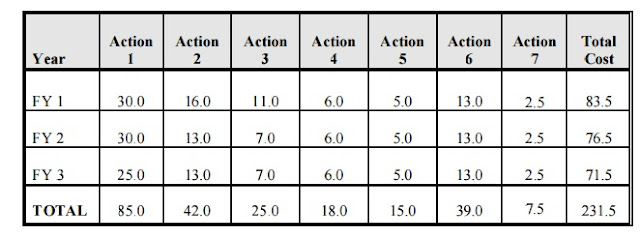Conserve & Restore the Carex Lutea
By: Izamar Lopez
Golden Sedge (Carex
lutea)
Listing
Status: Endangered
Listed Date: January 23, 2002
(Photographer: Mike Kunz)
Description &
Ecology:
Golden sedge
is a perennial member of the sedge family (Cyperaceae). When its stems are fertile
they can reach up to 39.4 inches or more in height and can produce two to four
flowering spikes (multiple flowering structures with flowers attached to the
stem). The terminal spike is male and is about 0.8-1.6 in long, 0.06-0.01 in
wide and the one to three lateral female spike are round to elliptic, about
0.4-0.6 in long, 0.4 in wide. The time of year in which Golden sedge is most
readily identified is from mid-April to mid-June which is during the flowering
and fruiting season. This Carex is distinguished from other Carex species that
share the same habitat due to the fact that Golden sedge has a bright yellow
color, it is tall growing, and slender. The Sedge grows in sandy soils
overlying coquina limestone deposits, where the soil Ph is unusually high for
this region. Solis that support Golden sedge are very wet to periodically shallowly
inundated. The type of ecotone in which this species prefers to reside is
between the pine savanna and adjacent wet hardwood or hardwood/conifer forest. (USFWS,
1999)
Geographic Range &
Population:
Carex lutea
was first collected by Richard LeBlond on April 11, 1990, in Pender County,
North Carolina. It was collected in an immature state. From analysis of a
mature specimen collected on May 22, 1991, it was determined that the taxon
belonged to the genus Carex, under section Ceratocystis,
which was not previously known from North Carolina. The sedges that pertain to
that section tend to occur in more temperate regions in North America, Europe,
Asia, and Australia. Golden Sedge consists of eight populations and are
primarily found in Northeast Cape Fear River watershed in Pender and Onslow
counties, North Carolina. (USFWS, 1999)
Listing Causes &
Threats:
The remaining populations of Golden sedge
are currently threatened by habitat loss or alteration posed by development, mining, encroachment
of competing vegetation, fire suppression, intensive right-of-way maintenance
activities, trash dumping, and wetland drainage activities associated with
silviculture, agriculture and development projects. The following five listing
factors which are outlined in section 4(a)(1) of the Act the analysis details
relating to the threats of this species.
Factor A. Present or threatened destruction, modification, or
curtailment of habitat or range
Factor B. Overutilization for commercial, recreational, scientific or
educational purposes
Factor C. Disease or predation
Factor D. Inadequacy of existing regulatory mechanisms
Factor E. other natural or manmade factors affecting the continued
existence of a species
(USFWS, 1999)
Recovery Strategy:
The recovery
plan for Carex lutea involves protection and management of known sites of the
species. this includes addressing immediate threats with fire management and
invasive species control as needed. The intention is to work closely with
different partners like local governments, universities, and State agencies to
reduce threats to the known populations, find new strategies and increase the
knowledge of the biology of this plant in order to help it recover. The main
goal is to be able to remove the species from the Federal List of Endangered and Threatened Plants. There are seven main recover actions needed
in order to offer the best possible chance of growing number to the Golden
sedge. These include:
1. Protect
Carex lutea sites/occurrences and adjacent buffer habitat.
2. Increase
and strengthen Carex lutea sites/occurrences through management, augmentation
or other techniques.
3. Develop
site specific management and prescribed burn plans for each occurrence.
4. Conduct surveys for additional populations
and investigate options/avenues for potential reintroductions.
5. Develop
and implement a monitoring plan to assess population trends, reproductive
success and threats.
6. Conduct
research essential to the survival of Carex lutea.
7. Develop and imp
The implementation of recovery tasks, from which cost
estimates can be made over a three-year period of recovery effort, will total
approximately $231,500. (79 FR 29200,2014) (USFWS, 1999)
Estimated
date for full recovery of the Golden sedge is 2025, provided that funds are
available.
References:
"Recovery Plans
Search." Endangered Species. N.p.,
n.d. Web. 07 June 2015.
"Species Profile
for Golden Sedge (Carex Lutea)." Species Profile for Golden
Sedge (Carex Lutea). N.p., n.d. Web.
07 June 2015.
"Raleigh Ecological Services Field Office Conserving
the Nature of America"
Buchanan,
M.F. and J.T. Finnegan. 2010. Natural Heritage Program List of the Rare Plant
Species of North Carolina. NC Natural Heritage Program, Raleigh, NC.
U.S. Fish and Wildlife Service. 1999.
Proposed Endangered Status for Carex lutea (Golden Sedge) http://www.fws.gov/raleigh/species/es_golden_sedge.html






No comments:
Post a Comment